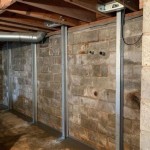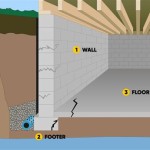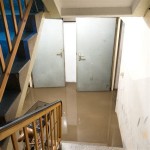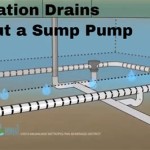Sump Pump for Basement Flooding: A Comprehensive Guide
Basement flooding is a common and potentially devastating problem for homeowners. Water damage can ruin valuables, damage structural components, and lead to mold growth. A sump pump is a vital tool for preventing and mitigating basement flooding.
How Sump Pumps Work
A sump pump is a submersible pump that is installed in a sump basin, a pit dug below the basement floor. When the water level in the basin rises, a float switch activates the pump, which pumps the water out of the basement through a discharge pipe. Sump pumps can be powered by electricity or battery, providing backup protection in the event of a power outage.
Types of Sump Pumps
There are two main types of sump pumps: pedestal and submersible.
- Pedestal pumps are placed in the sump basin on a pedestal. They are less expensive than submersible pumps, but they are also less durable and can be more prone to clogging.
- Submersible pumps are completely submersed in the water in the sump basin. They are more durable and efficient than pedestal pumps, but they are also more expensive.
Factors to Consider When Choosing a Sump Pump
When choosing a sump pump, it is important to consider the following factors:
- Flow rate: The flow rate of a sump pump is measured in gallons per minute (GPM). The higher the flow rate, the more water the pump can remove in a given period of time.
- Head height: The head height of a sump pump is the vertical distance the pump can push water. The head height must be sufficient to reach the discharge point.
- Power source: Sump pumps can be powered by electricity or battery. Electrically powered pumps are more common and less expensive, but battery-powered pumps provide backup protection in the event of a power outage.
- Durability: The durability of a sump pump is determined by its construction and materials. Submersible pumps are generally more durable than pedestal pumps.
- Size: The size of a sump pump should be appropriate for the size of the basement and the potential amount of water that may need to be removed.
Installation and Maintenance
Sump pumps should be installed by a qualified electrician or plumber. The pump should be placed in a sump basin that is at least 18 inches deep and 24 inches in diameter. The basin should be made of durable materials, such as concrete or plastic.
Sump pumps should be inspected and tested regularly to ensure they are working properly. The pump should be cleaned and any debris removed. The discharge pipe should also be checked for blockages.
Conclusion
Sump pumps are an essential tool for preventing and mitigating basement flooding. By choosing the right sump pump and installing and maintaining it properly, homeowners can protect their homes from water damage.

How To Not Flood Your Basement A Guide Sump Pump System Home Inspection Geeks

Prevent Basement Flooding The Role Of Sump Pumps In Water Management Dry Foundation Repair

Chase Your Problems Away With A Sump Pump Plumbing

Sun Sea Sand And Sump Pumps

What To Do When Your Sump Pump Fails In A Rainstorm

How To Check Your Sump Pump Prevent Basement Flooding

How To Prevent Basement Flooding Complete Strategy

Sump Pump Failure Dealing With The Aftermath Rytech Restoration

Basement Waterproofing Flooded In Vernon Rockville Failed Sump Pump

How To Prevent A Frozen Sump Pump From Flooding Your Basement
See Also








